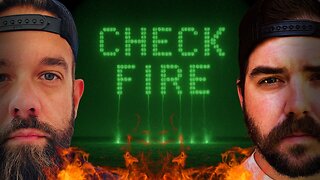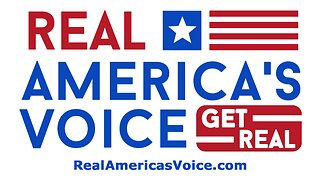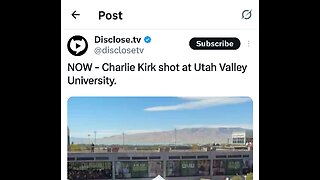Premium Only Content

Forklift Safety Training
You’re giving feedback on a new version of ChatGPT.
Which response do you prefer? Responses may take a moment to load.
ChatGPT
Response 1
Forklift safety training is essential to ensure workplace safety and compliance with regulations. Proper training reduces the risk of accidents, injuries, and equipment damage. Here's an outline of what forklift safety training typically includes:
1. Understanding Regulations
OSHA Compliance: Training programs must meet OSHA (or local authority) standards.
Employer Responsibilities: Employers must ensure operators are trained and certified.
2. Forklift Basics
Types of Forklifts: Counterbalance, reach trucks, pallet jacks, etc.
Forklift Components: Forks, mast, carriage, counterweight, controls, tires.
3. Safe Operation Practices
Pre-Operational Checks:
Inspect tires, brakes, lights, and fluid levels.
Check for leaks or damage.
Ensure forks are in good condition.
Starting Procedures: Use the correct startup sequence.
Driving Techniques:
Maintain a safe speed.
Keep forks low while traveling.
Observe clearances and avoid obstructions.
Use mirrors and spotters when necessary.
Lifting and Carrying Loads:
Position loads evenly.
Don’t exceed weight limits.
Ensure the load is stable before moving.
4. Hazard Awareness
Common Hazards: Uneven surfaces, narrow aisles, slippery floors, and blind spots.
Pedestrian Safety: Yield to pedestrians and maintain a safe distance.
Tipping Prevention:
Avoid sharp turns at speed.
Keep the load uphill on slopes.
5. Emergency Protocols
What to do in case of accidents or equipment failure.
Reporting unsafe conditions.
6. Hands-On Practice
Practical operation under supervision.
Navigating through obstacle courses.
Loading/unloading materials.
7. Certification and Evaluation
Written test to assess knowledge.
Practical test to evaluate skill proficiency.
Certification issued upon successful completion.
Would you like help in preparing training materials, presentations, or a checklist for forklift safety?
I prefer this response
ChatGPT
Response 2
Forklift safety training is essential to ensure the safety of operators, bystanders, and property in workplaces where forklifts are used. Proper training focuses on understanding the equipment, safe operation practices, and compliance with regulations, such as those set by OSHA (Occupational Safety and Health Administration) in the U.S. Here's a breakdown of what forklift safety training typically includes:
1. Introduction to Forklift Basics
Understanding the Equipment: Components, controls, and functions.
Types of Forklifts: Sit-down riders, stand-up reach trucks, pallet jacks, etc.
Stability Triangle: Key concept explaining balance and tipping prevention.
2. Regulations and Standards
OSHA standards (if applicable) for forklift operation.
Company policies and procedures.
3. Pre-Operation Inspection
Checking tires, brakes, steering, and warning devices.
Inspecting forks, hydraulic systems, and fuel/electrical connections.
Recording any maintenance issues.
4. Safe Operating Practices
Starting and Driving:
Wearing seat belts and safety gear.
Proper starting procedures.
Operating at safe speeds and in designated areas.
Loading and Unloading:
Weight limits and load capacity.
Proper positioning and securing of loads.
Avoiding overloading.
Maneuvering:
Navigating narrow aisles and tight spaces.
Safe turning and reversing techniques.
Keeping loads low when moving.
5. Hazard Awareness
Identifying workplace hazards, such as:
Uneven surfaces or ramps.
Pedestrian traffic.
Blind spots and obstructions.
How to handle spills, obstructions, or emergency situations.
6. Parking and Refueling/Charging
Safely parking on level ground.
Turning off and securing the forklift.
Refueling with propane/diesel or recharging batteries safely.
7. Practical Hands-On Training
Practicing operation in a supervised environment.
Demonstrating skills such as lifting, maneuvering, and parking.
Simulated hazard scenarios.
8. Evaluation and Certification
Written test to assess theoretical knowledge.
Practical evaluation of forklift operation skills.
Issuance of a certificate or operator license.
9. Refresher Training
When introducing new equipment.
After accidents or unsafe incidents.
Periodically, as required by workplace policies.
Would you like guidance on developing a detailed training program, or are you looking for resources to implement one?
I prefer this response
ChatGPT can make mistakes. Check important info.
-
 6:54
6:54
HSESafetyInformation
6 months ago6 Must Try Breakfast recipes By Food Fusion
351 -
 13:09:56
13:09:56
LFA TV
21 hours agoBREAKING: CHARLIE KIRK ASSASSINATED - WEDNESDAY 9/10/25
364K125 -
 1:31:08
1:31:08
I_Came_With_Fire_Podcast
7 hours agoCheck Fire: God Bless Charlie Kirk
78.6K22 -
 1:13:35
1:13:35
Glenn Greenwald
9 hours agoCharlie Kirk Assassinated; NATO Alleges Russian Drones Flew Over Poland, and More | SYSTEM UPDATE #512
276K286 -
 1:46:28
1:46:28
Badlands Media
23 hours agoAltered State S3 Ep. 45: The Assassination of Charlie Kirk
151K25 -
 8:56:53
8:56:53
Dr Disrespect
16 hours ago🔴LIVE - DR DISRESPECT - THE FINALS - NEW SEASON 8 LAUNCH EVENT W/ THE SHOTTY BOYS
275K10 -
 LIVE
LIVE
RealAmericasVoice
3 days agoHOME OF REAL NEWS
3,012 watching -
 27:00
27:00
BonginoReport
10 hours agoRest In Peace Charlie Kirk - Nightly Scroll w/ Hayley Caronia (Ep.131) - 09/10/2025
257K398 -
 1:20:06
1:20:06
Kim Iversen
11 hours agoRIP Charlie Kirk: When Words Fail, They Reach for Guns
183K334 -
 2:47:04
2:47:04
DDayCobra
12 hours ago $18.48 earnedCharlie Kirk SHOT
157K63